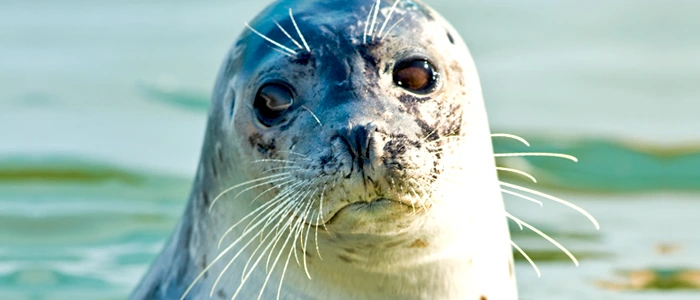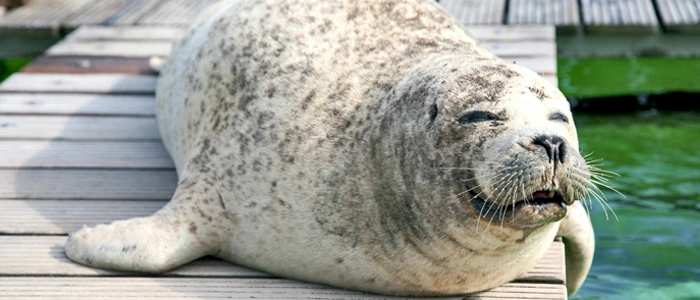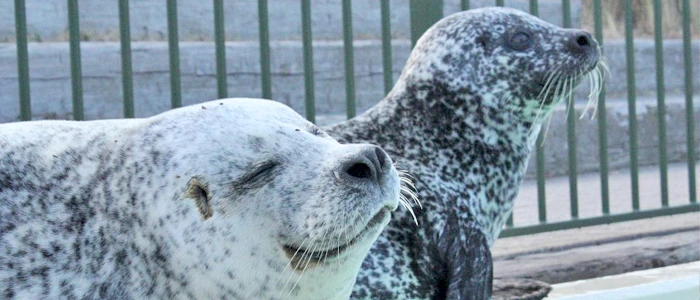The harbour seal
28 species of seals can be found worldwide. Two of these species are often seen in the salty waters of The Netherlands, the harbour seal and the gray seal. With salty waters we not only mean the Waddenzee and the North sea, but the Oosterschelde, the Westerschelde, the Haringvliet, the Grevelingen and sometimes the Veerse lake as well. These days thousands of seals live in The Netherlands. That used to different. After the seal virus epidemic in the 1980’s the seals were nearly extinct. We can see that over the years nature has restored herself with a bit of help.
Characteristics
The harbour seal can be recognised by its small round head. This is vastly different from the gray seal, who has a long cone shaped snout. Because of this, these seals are also known as ‘kegelrobben’ as ‘kegel’ means cone. Gray seals are also much larger than harbour seals. Seals are mammals. This means that they bear live young. It also means that they have continual body temperature of 37 degrees and can not breathe under water. Just like humans seals have lungs but they are able to hold their breaths up to half an hour. This is possible because a seal can regulate the beating of his heart. By lowering the heartbeat the oxygen in the seal’s bloodstream is circulated slower which enables the seal to remain submerged for a longer period of time. The seal also seals his nostrils with a small muscle. This way water can not enter the airways. He does the same with his ears, they also are also closed when under water.
In the month of August, the male harbour seals start trying to impress the females. They do this by roaring, gurgling, blowing bubbles or by slapping the water with their fins. Seals carry one pup at a time and have a gestation period of eleven months.
Seals have extremely sensitive whiskers. These whiskers enable them to track down fish. Seals eat fish and the occasional squid. For a very short period, very young seals that just started fending for themselves will sometimes eat shrimps as well because they are easy to hunt. The whiskers are so sensitive that they can sense a swimming fish from a distance of 180 metres!









